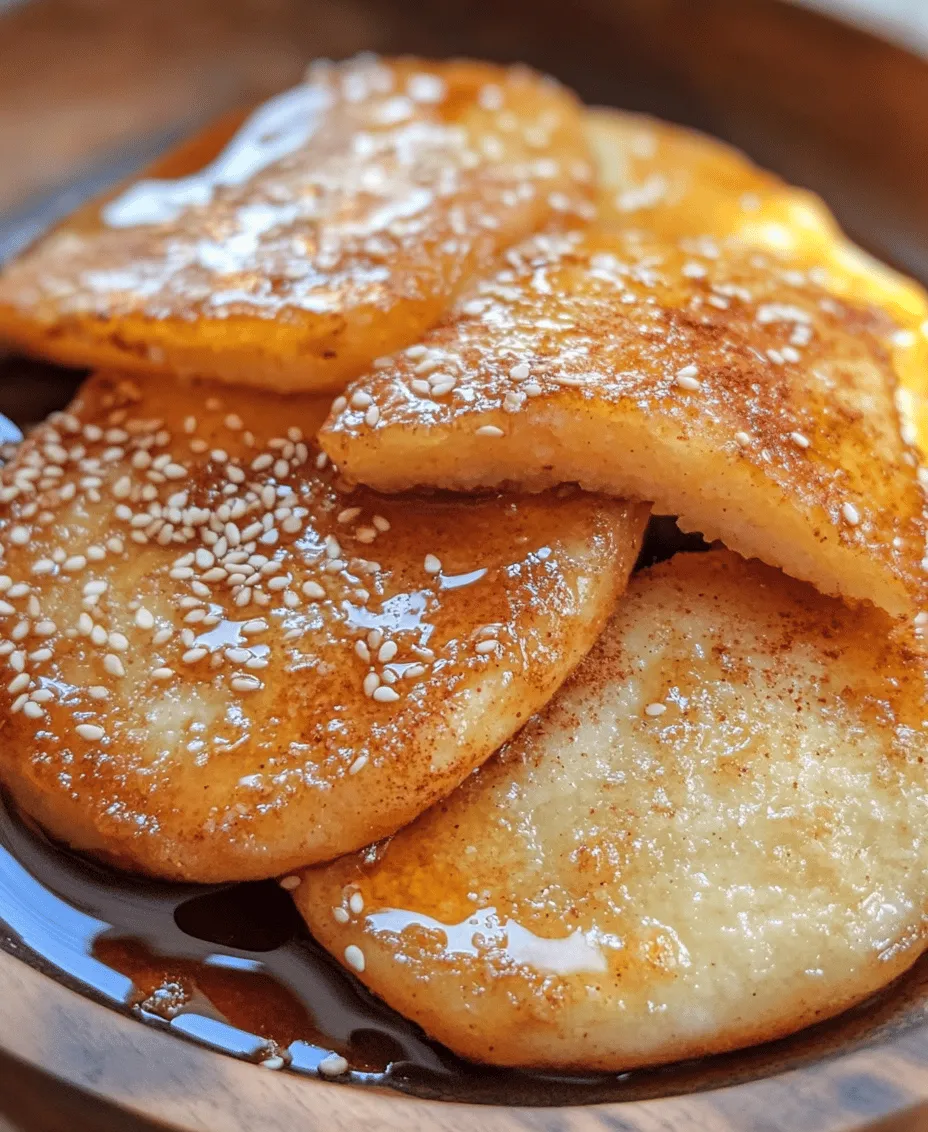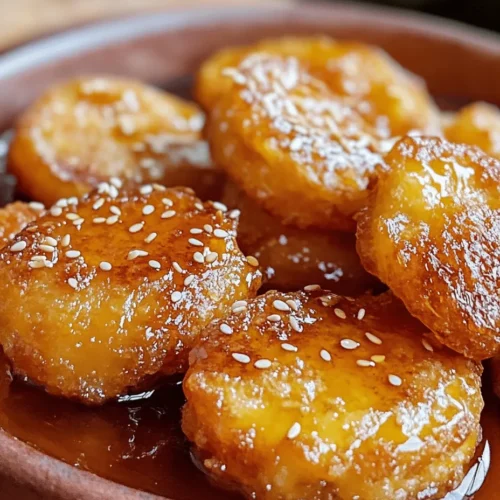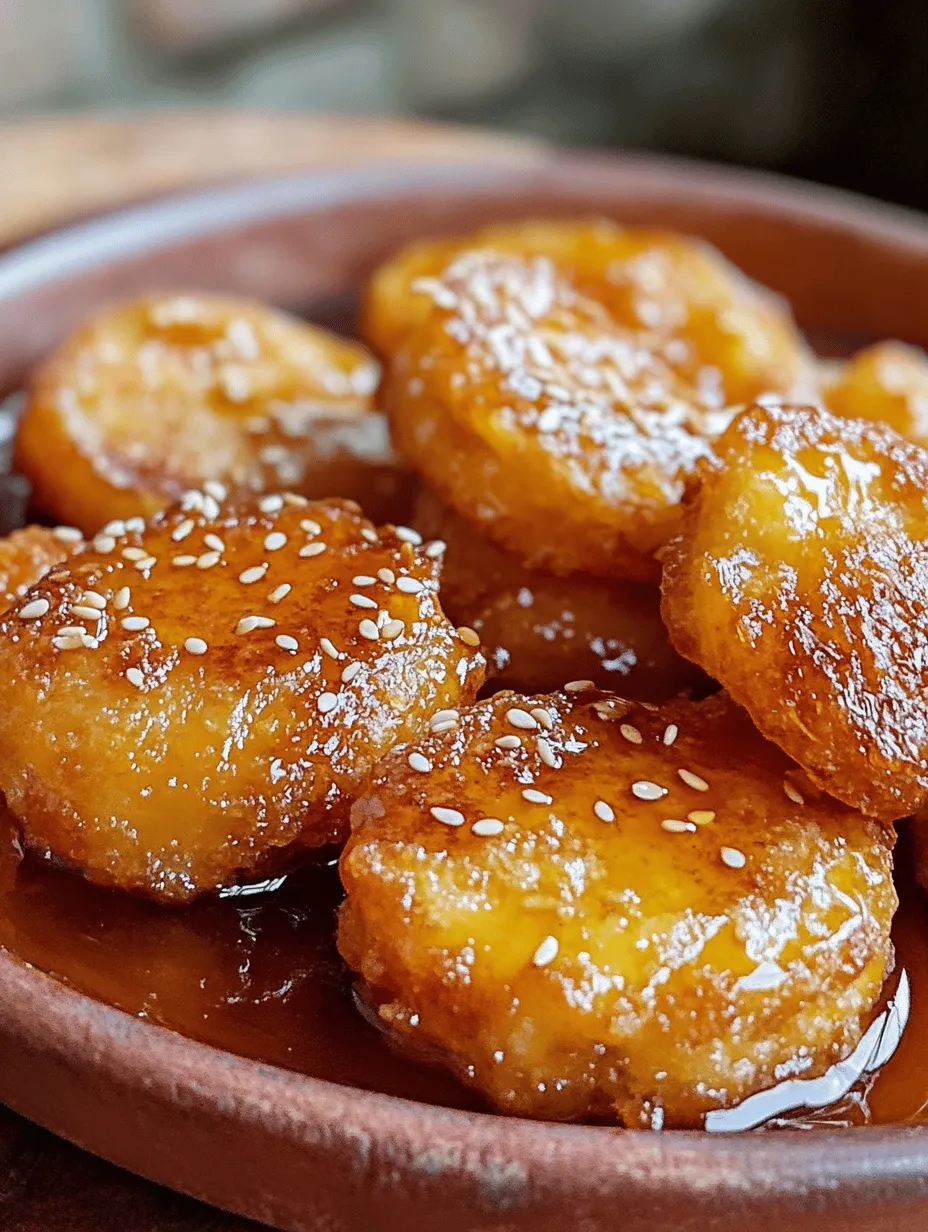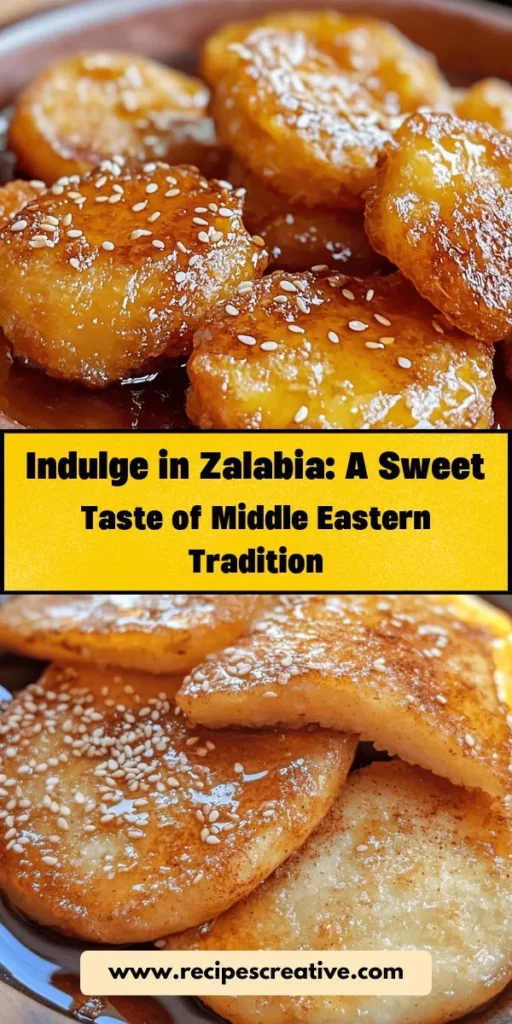Introduction
Zalabia, also known as “Zalabiya” or “Zalab,” is a cherished dessert in the Middle Eastern culinary landscape, celebrated for its unique flavor and enticing texture. This delightful sweet treat, often enjoyed during festive occasions and family gatherings, has earned its place as a staple in various cultures across the region. With its origins steeped in tradition, Zalabia has become a symbol of hospitality and joy, drawing sweet lovers from all walks of life.
The popularity of Zalabia spans countries like Egypt, Lebanon, and Tunisia, where it is often found at weddings, Ramadan celebrations, and other significant events. Known for its crispy exterior and soft, airy interior, Zalabia is typically drizzled in honey or sugar syrup, making each bite a heavenly experience. The blend of flavors and textures makes it a must-try dish for anyone looking to explore the rich culinary traditions of the Middle East.
In this article, we will delve into the heart of Zalabia, uncovering its origins, variations, and the essential ingredients that bring this dessert to life. We’ll also guide you through the preparation steps, ensuring you can create this delightful treat right in your own kitchen.
Understanding Zalabia
Zalabia is a deep-fried doughnut-like dessert that is usually served warm, often coated in a sweet syrup. The traditional preparation involves a simple batter made from a combination of all-purpose flour, semolina, sugar, salt, and yeast. The dough is allowed to rise before being piped into hot oil, where it puffs up to create its characteristic shape and texture.
This sweet treat is not without its variations; different cultures have adapted Zalabia to suit their tastes and traditions. In some regions, Zalabia is flavored with spices such as cardamom or saffron, while others may incorporate nuts or dried fruits into the batter. The method of serving also varies: while some enjoy it drizzled in honey, others prefer a light sugar syrup infused with aromatic flavors.
The history of Zalabia can be traced back to ancient times, with references found in Arabic literature and cookbooks. It is believed to have originated in the Middle East, later spreading to other parts of the world, including North Africa and even parts of Europe. Each culture that embraced Zalabia has contributed its unique twist, making it a delicious reflection of regional culinary practices and preferences.
Ingredients Breakdown
To create the perfect Zalabia, it is essential to understand the role of each ingredient in the recipe. Here’s a detailed overview of the components that come together to create this delightful dessert:
All-Purpose Flour
All-purpose flour serves as the foundation of the Zalabia batter, providing the necessary structure and texture. Its gluten content allows the dough to rise while ensuring that the finished product is tender and fluffy.
Semolina
Semolina, a coarse flour made from durum wheat, enhances the flavor and adds a delightful crunch to the Zalabia. It contributes to the dessert’s unique texture, offering a pleasant contrast to the soft interior.
Sugar
Sugar not only sweetens the dough but also plays a crucial role in the fermentation process when combined with yeast. This fermentation contributes to the lightness and airy quality of the Zalabia, ensuring each piece is a melt-in-your-mouth experience.
Salt
Salt is a key ingredient that balances the sweetness of the sugar. It enhances the overall flavor of the Zalabia, making it more complex and satisfying to the palate.
Active Dry Yeast
Active dry yeast is the leavening agent responsible for the dough’s rise. Its proper activation is vital for creating the airy texture characteristic of Zalabia. When mixed with warm water and sugar, the yeast begins to ferment, producing carbon dioxide that causes the dough to expand.
Warm Water
Warm water is essential for activating the yeast. The temperature should be just right—not too hot, as it can kill the yeast, and not too cold, as it will not activate properly. The warm water helps create a smooth batter by allowing the ingredients to combine seamlessly.
Vanilla Extract
Vanilla extract adds depth and a subtle sweetness to the Zalabia, enhancing its flavor profile. This aromatic addition elevates the overall taste, making each bite even more delightful.
Oil for Frying
Choosing the right oil for frying is crucial in achieving the perfect Zalabia. A neutral oil with a high smoke point, such as canola or vegetable oil, is ideal for frying, as it allows the dough to crisp up beautifully without imparting any unwanted flavors.
Honey or Sugar Syrup
The sweet glaze that coats Zalabia is often made from honey or sugar syrup. This finishing touch not only adds sweetness but also creates a glossy, appealing appearance. A drizzle of honey or syrup transforms the Zalabia into a truly irresistible treat.
Optional Garnishes
To elevate the presentation and flavor of Zalabia, optional garnishes such as ground cinnamon or sesame seeds can be sprinkled on top. Ground cinnamon adds warmth and spice, while sesame seeds provide a nutty crunch that complements the sweetness of the dessert.
Preparation Steps Explained
Now that we have a clear understanding of the ingredients, let’s explore the preparation steps involved in making Zalabia. This process will guide you through creating this delightful dessert from scratch.
1. Activate the Yeast: In a small bowl, combine warm water with sugar and active dry yeast. Allow this mixture to sit for about 5 to 10 minutes, or until it becomes frothy. This step is crucial as it signals that the yeast is alive and ready to work its magic.
2. Prepare the Batter: In a large mixing bowl, combine all-purpose flour, semolina, and salt. Mix the dry ingredients thoroughly before creating a well in the center. Pour in the activated yeast mixture and vanilla extract, then gradually mix the ingredients together, adding more warm water as needed to form a smooth, thick batter.
3. Let It Rise: Cover the bowl with a clean kitchen towel or plastic wrap and place it in a warm, draft-free area. Allow the batter to rise for about 1 to 1.5 hours, or until it has doubled in size. This fermentation process is essential for achieving that light and airy texture.
4. Heat the Oil: In a deep frying pan or pot, pour enough oil to submerge the Zalabia. Heat the oil over medium-high heat until it reaches approximately 350°F (175°C). To test if the oil is hot enough, drop a small amount of batter into the oil; if it sizzles and rises to the surface, the oil is ready.
5. Fry the Zalabia: Using a piping bag fitted with a round tip or a squeeze bottle, carefully pipe the batter into the hot oil in spiral shapes or small circles. Fry the Zalabia in batches, being careful not to overcrowd the pan. Cook until they are golden brown and crispy, about 2 to 3 minutes per side. Use a slotted spoon to transfer the fried Zalabia to a plate lined with paper towels to absorb excess oil.
As you prepare to serve your Zalabia, you will be greeted by the delightful aroma of fried dough and the anticipation of tasting this Middle Eastern treasure. The next part of our journey will explore how to glaze your Zalabia and any additional serving suggestions that will elevate this dish even further.

Step-by-Step Breakdown of the Preparation Process
Creating the perfect Zalabia requires careful attention to detail throughout the preparation process. Each step is essential in ensuring that your dessert turns out deliciously fluffy and perfectly crisp.
Mixing Dry Ingredients: Importance of Even Distribution
Begin by gathering your dry ingredients: all-purpose flour, sugar, baking powder, and a pinch of salt. It’s important to mix these thoroughly in a large bowl. This ensures that the sugar and baking powder are evenly distributed throughout the flour, promoting uniform texture and flavor in your final product. Use a whisk or a fork to blend the ingredients until there are no visible clumps. This simple step can greatly enhance the quality of your Zalabia.
Activating Yeast: The Science Behind Fermentation
In a separate bowl, combine warm water and yeast. The water should be warm to the touch but not hot—ideally around 110°F (43°C). If the water is too hot, it can kill the yeast, while water that is too cold won’t activate it effectively. Allow the yeast to sit for about 10 minutes until it becomes frothy. This is a crucial moment, as it indicates that the yeast is alive and ready to ferment the sugars in your batter, which will help create the delightful rise and airy texture characteristic of Zalabia.
Creating the Batter: Achieving the Right Consistency
Once the yeast is activated, combine it with the dry ingredients. Gradually add the yeast mixture into the flour mix while stirring continuously. At this stage, you might need to add a bit more warm water to achieve a smooth batter. The ideal consistency is somewhat thick but still pourable. It should flow easily from a spoon but hold its shape when dropped. If the batter is too runny, your Zalabia will not hold its shape during frying, while if it’s too thick, it will result in dense fritters.
The Rising Process: Importance of Letting the Batter Rise Properly
Cover the bowl with a clean kitchen towel or plastic wrap and place it in a warm, draft-free area. Allow the batter to rise for at least 45 minutes to 1 hour. This is where the magic happens—the yeast ferments, producing carbon dioxide that causes the batter to expand and become airy. A well-risen batter will yield light and fluffy Zalabia, so don’t skip this step. You will know it is ready when it has nearly doubled in size and appears bubbly.
Frying Techniques: Tips for Getting the Perfect Golden-Brown Color
Once the batter has risen, it’s time to fry. Heat a deep pan with vegetable oil over medium heat. The oil should be sufficiently hot—around 350°F (175°C)—to ensure the Zalabia cooks evenly and attains that desirable golden-brown color. Use a spoon or a piping bag to drop dollops of batter into the hot oil, being careful not to overcrowd the pan. Fry in small batches, allowing each piece enough space to float and brown evenly. Flip them as needed to ensure they cook on both sides.
Draining Excess Oil: Ensuring a Crispy Texture
Once the Zalabia are perfectly golden brown, use a slotted spoon to remove them from the oil. Place them on a plate lined with paper towels to absorb any excess oil. This step is crucial for achieving that crispy texture that makes Zalabia so delightful. The paper towels will help drain any lingering oil, ensuring that your dessert isn’t greasy.
Final Touches with Honey or Syrup: Enhancing Flavors Before Serving
While the Zalabia are still warm, drizzle them generously with honey or a simple sugar syrup. The warmth helps the sweetener to adhere better and infuse the fritters with flavor. If you choose to make a sugar syrup, simply combine equal parts sugar and water in a saucepan, bring it to a boil, and then simmer until slightly thickened. For an added flavor twist, consider infusing the syrup with a touch of rose water or orange blossom water.
Serving Suggestions
Presenting Zalabia: Creative Ways to Serve This Dessert
When it comes to serving Zalabia, presentation is key. Arrange the warm fritters on a decorative platter, sprinkling them lightly with powdered sugar or crushed nuts for an appealing touch. For an elegant presentation, consider serving them in individual dessert cups, drizzled with honey and garnished with fresh mint leaves or a sprinkle of cinnamon.
Pairing Ideas: Complementary Dishes or Drinks That Go Well with Zalabia
Zalabia pairs wonderfully with various beverages. Traditional options include mint tea or Arabic coffee, both of which enhance the flavors of the dessert. For a modern twist, serve with a scoop of vanilla ice cream or a dollop of whipped cream. These creamy accompaniments provide a delightful contrast to the crispy texture of the fried dough.
Occasion Suitability: When to Serve Zalabia
This Middle Eastern delicacy is perfect for various occasions. It’s commonly enjoyed during festive celebrations such as Eid, Ramadan, and weddings. However, you can also serve Zalabia at casual gatherings, family get-togethers, or as a delightful end to a dinner party. Its versatility makes it a beloved dessert that can please any crowd.
Nutritional Information
Overview of the Nutritional Profile of Zalabia Per Serving
While Zalabia is a delightful treat, it’s essential to be mindful of its nutritional content. A typical serving (about three pieces) contains approximately 300 calories, with 15 grams of fat, 40 grams of carbohydrates, and 5 grams of protein. The sugar content can vary depending on how much honey or syrup you use, so it’s wise to adjust according to your dietary needs.
Discussing Potential Dietary Considerations
Zalabia is primarily made from wheat flour, making it unsuitable for those with gluten sensitivities or celiac disease. Additionally, due to its high sugar content, individuals monitoring their sugar intake should enjoy this dessert in moderation. For those looking for alternatives, consider experimenting with gluten-free flour blends, though this may alter the texture slightly.
Cultural Significance and Variations
Explore Different Regional Variations of Zalabia
Zalabia, while universally adored, has numerous regional variations across the Middle East. In Morocco, it may be referred to as “zalabia” or “sfenj,” often flavored with spices like saffron or cinnamon. Egyptian Zalabia tends to be sweeter, while Turkish “lokma” is similar but often served with a thicker syrup. Each region brings its unique twist, showcasing the versatility of this beloved dessert.
Discuss Cultural Events or Festivals Where Zalabia Is Traditionally Served
In many Middle Eastern cultures, Zalabia is a festive treat, especially during Ramadan. Families often prepare large batches to share with friends and neighbors, symbolizing generosity and community. It is also commonly served during weddings and religious celebrations, making it a staple dessert that brings people together.
Insight Into How Zalabia Is Perceived In Various Middle Eastern Communities
In Middle Eastern communities, Zalabia is more than just a dessert; it embodies tradition and cultural heritage. Each community has its way of preparing and enjoying Zalabia, often passed down through generations. This shared love for the dish fosters a sense of belonging and nostalgia, making it a cherished part of family gatherings and special occasions.
Conclusion
Making Zalabia is not just about creating a delicious dessert; it’s about embracing a rich culinary tradition that connects people through shared experiences and flavors. The process of preparing this sweet treat is filled with care and attention to detail, resulting in a delightful dish that captures the heart of Middle Eastern cuisine. As you explore this recipe, consider experimenting with your variations, perhaps by incorporating different spices or toppings. Whether served during a festive celebration or enjoyed casually at home, Zalabia is sure to bring joy to your table. So gather your ingredients, follow the steps, and embark on a culinary journey that celebrates the flavors and traditions of the Middle East.



